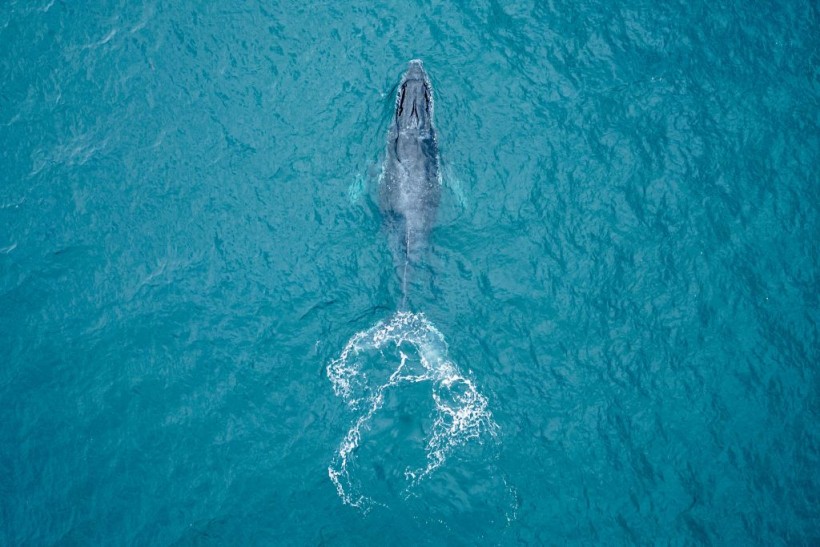Seismic surveys are a common method of exploring the ocean floor for oil, gas, and other resources. But they also produce loud and powerful sound waves that can affect the behavior, physiology, and survival of marine life.
How seismic surveys affect whales and dolphins
 (Photo : FLORIAN PLAUCHEUR/AFP via Getty Images)
(Photo : FLORIAN PLAUCHEUR/AFP via Getty Images)

Whales and dolphins rely on sound for communication, navigation, foraging, and social interactions. Seismic surveys can interfere with these functions in various ways.
One of the most obvious effects is hearing loss, which can be temporary or permanent, depending on the intensity, duration, and frequency of the sound exposure.
Hearing loss can impair the ability of whales and dolphins to detect predators, prey, mates, and other important signals.
Another effect is behavioral change, which can include avoidance, displacement, reduced feeding, altered diving patterns, increased stress, and reduced reproduction.
For example, a study found that humpback whales stopped singing during a seismic survey off Western Australia. Singing is an important way for male humpbacks to attract females and compete with rivals.
A more severe effect is stranding, which occurs when whales or dolphins beach themselves on shore or in shallow water.
Stranding can be fatal or cause serious injuries. The exact causes of stranding are not fully understood, but some cases have been linked to seismic surveys.
For example, a mass stranding of 39 pilot whales in New Zealand coincided with a seismic survey in 2004.
How seismic surveys affect fish and crustaceans
Fish and crustaceans are also sensitive to sound, as they use it for orientation, migration, predator avoidance, and social interactions. Seismic surveys can affect them in various ways.
One of the effects is reduced catch rates, which can indicate changes in fish abundance, distribution, or behavior.
For example, a study found that catch rates of cod and haddock declined by 45% to 70% during a seismic survey in the North Sea.
Another effect is physiological damage, which can include injuries to the inner ear, swim bladder, eyes, and other organs.
For example, a study found that rock lobsters exposed to seismic survey sound showed signs of nerve damage and balance problems. These effects can reduce the survival and fitness of the animals.
A more subtle effect is altered gene expression, which can indicate changes in stress levels, immune system function, or metabolism.
A study found that scallops exposed to seismic survey sound showed changes in genes related to oxidative stress, inflammation, and apoptosis (cell death). These changes can affect the health and growth of the animals.
Also Read: Seismic Activity on the San Andreas Fault Are Linked to Changes in the Earth's Magnetic Field
How to reduce the impacts of seismic surveys
Seismic surveys are regulated by various authorities around the world, but the standards and guidelines vary widely. Some of the common measures to reduce the impacts of seismic surveys include:
- Conducting environmental impact assessments before starting a survey
- Avoiding sensitive areas or seasons for marine life
- Using acoustic deterrent devices or observers to detect and avoid marine mammals
- Reducing the sound intensity or duration of the survey
- Implementing mitigation zones or shut-down procedures when marine life is detected near the survey
- Monitoring the effects of the survey on marine life during and after the operation
However, these measures are not always effective or sufficient to prevent harm to marine life. There is still a need for more research and innovation to develop alternative methods of exploration that are less invasive and noisy.
There is also a need for more collaboration and communication among stakeholders, such as industry, government, scientists, and conservationists, to find solutions that balance the economic benefits and environmental costs of seismic surveys.
Related article: Earthquake Swarm Continues in the Columbia Area, as Renewed Seismic Activity Reported in the Midlands
© 2024 NatureWorldNews.com All rights reserved. Do not reproduce without permission.


![Climate Change is Reducing Dust Levels Worldwide as Arctic Temperature Warms [Study]](https://1471793142.rsc.cdn77.org/data/thumbs/full/70320/280/157/50/40/climate-change-is-reducing-dust-levels-worldwide-as-arctic-temperature-warms-study.jpg)

![Tsunami Hazard Zones: New US Map Shows Places at Risk of Flooding and Tsunamis Amid Rising Sea Levels [NOAA]](https://1471793142.rsc.cdn77.org/data/thumbs/full/70325/280/157/50/40/tsunami-hazard-zones-new-us-map-shows-places-at-risk-of-flooding-and-tsunamis-amid-rising-sea-levels-noaa.jpg)
